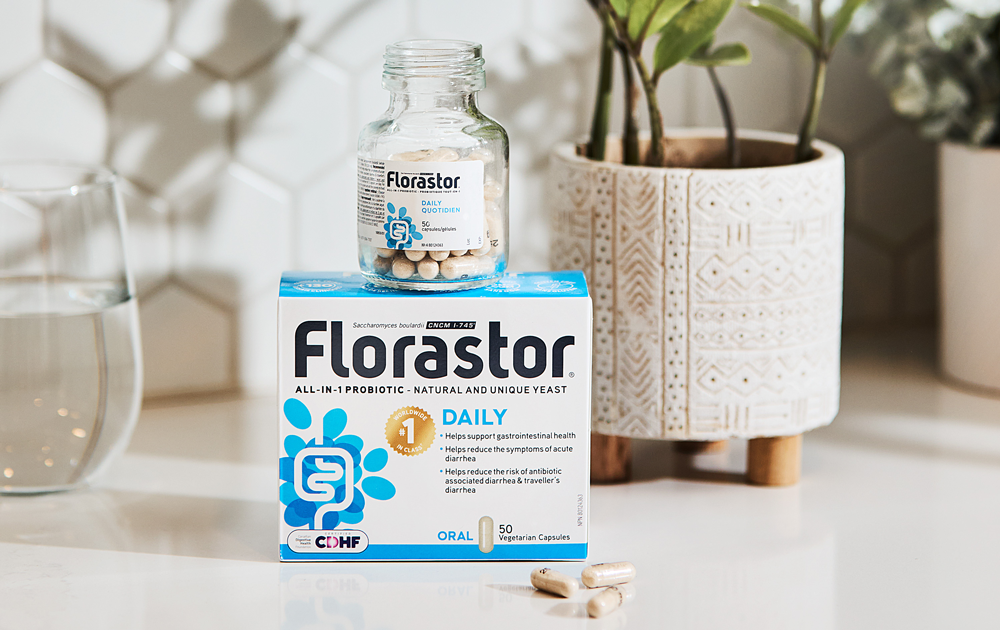RÉFÉRENCES
Swidsinski, A., Loening-Baucke, V., Verstraelen, H., Osowska, S., & Doerffel, Y. (2008). Biostructure of fecal microbiota in healthy subjects and patients with chronic idiopathic diarrhea. Gastroenterology, 135(2), 568-579.
Buts, J.P., Bernasconi, P., Van Craynest, M.P., Maldague, P., & De Meyer, R. (1986). Response of human and rat small intestinal mucosa to oral administration of Saccharomyces boulardii. Pediatric Research, 20, 192-196.
Klein, S.M., Elmer, G.W., McFarland, L.V., Surawicz, C.M., & Levy, R.H. (1993). Recovery and elimination of the biotherapeutic agent, Saccharomyces boulardii, in healthy human volunteers. Pharmaceutical Research, 10, 1615-1619.
Szajewska, H. & Kołodziej, M. (2015). Systematic review with meta‐analysis: Saccharomyces boulardii in the prevention of antibiotic‐associated diarrhoea. Alimentary Pharmacology & Therapeutics, 42(7), 793-801.
Kotowska, M., Albrecht, P., & Szajewska, H. (2005). Saccharomyces boulardii in the prevention of antibiotic-associated diarrhea in children: a randomized double-blind placebo-controlled trial. Aliment Pharmacology & Therapeutics, 21, 583-590.
Villarruel, G., Rubio, D.M., Lopez, F., Cintioni, J., Gurevech, R., et al. (2007). Saccharomyces boulardii in acute childhood diarrhoea: a randomized, placebo‐controlled study. Acta Paediatrica, 96(4), 538-541.
Blehaut, H., Massot, J., Elmer, G.W., & Levy, R.H. (1989). Disposition kinetics of Saccharomyces boulardii in man and rat. Biopharmaceutics & Drug Disposition, 10(4), 353-364.
Joint FAO/WHO Working Group on Drafting Guidelines for the Evaluation of Probiotics in Food (2002) Guidelines for the Evaluation of Probiotics in Food. London Ontario, Canada: FAO/WHO.
IMS Data 2017.
Health Canada. (2015, May) Probiotics (Monograph). Retrieved from www.hc-sc.gc.ca
Dinleyici, E.C., Eren, M., Ozen, M., Yargic, Z.A., & Vandenplas, Y. (2012). Effectiveness and safety of Saccharomyces boulardii for acute infectious diarrhea. Expert Opinion on Biological Therapy, 12(4), 395-410.
Neut, C., Mahieux, S., & Dubreuil, L. J. (2017). Antibiotic susceptibility of probiotic strains: Is it reasonable to combine probiotics with antibiotics?. Medecine et maladies infectieuses, 47(7), 477-483.
Kabbani, T. A., Pallav, K., Dowd, S. E., Villafuerte-Galvez, J., Vanga, R. R., et al. (2017). Prospective randomized controlled study on the effects of Saccharomyces boulardii CNCM I-745 and amoxicillin-clavulanate or the combination on the gut microbiota of healthy volunteers. Gut Microbes, 1, 17-32.
Panda S et al. Short-term effect of antibiotics on human gut microbiota. PLoS One 2014; 9: e95476.
Hickson M et al. Use of probiotic Lactobacillus preparation to prevent diarrhoea associated with antibiotics: randomised double blind placebo controlled trial. BMJ 2007; 335: 80
† 2018 IQVIA MIDAS®, 2019 Nielson data Q1 #1 sales in class=Non-bacterial probiotics (yeast-based probiotics)
